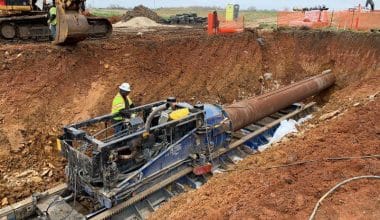A successful construction job results from many steps working together like the gears of a clock. Submittal construction is one of these processes. They are used to ensure that a project’s design requirements are met and that the client’s idea is carried out. If you’re working on a construction job or planning one, take the time to learn why it’s important to follow the right submittal procedures. In this blog post, we will explain submittal construction, the process, equipment, examples, and why construction submittals are important.
Submittal Construction
Submittal Construction is made up of construction documents, shop drawings, or product samples that a contractor gives to a general contractor, owner, architect, or engineer for approval of equipment, materials, or products before they are made, delivered, installed, or used on the project at hand.
To add to what was said above, a submittal is a written request that a contractor sends to a General Contractor or owner to get permission to do something before moving forward. Submittals are usually used when the contractor has chosen a material, like a certain kind of light, a plumbing fixture, etc., that they think meets the requirements on the specification sheet. Still, they want final approval from the GC or owner before installing the material.
Depending on the project and the design team’s needs, the submittal process can be different. But submittals are critical legal protections for workers because they show that official approval was given before installation. If a general contractor or owner comments after the material has been installed that they don’t like it, the contractor can always point to the submittal and say, “You approved it!”
Note: “Selection sheets,” which many contractors use to keep track of a client’s choice of light fixtures, tile, etc., capture the idea of “submittal construction” in a less formal way in residential contracting.
Read Also: CONTRACTOR SOFTWARE: Best 11+ General Contractor Software Programs 2023
Construction Submittals Examples
These are examples of construction submittal workflows.
- The subcontractor delivers the submittal to the general contractor, who evaluates it and sends it to the architect, who reviews it and sends it back to the general contractor, and the general contractor then provides the completed document to the subcontractor, who then begins work. This is one of the examples of construction submittals.
- The subcontractor sends the submittal to the general contractor. The general contractor sees it and sends it to the engineer. The engineer analyzes it and forwards it to the architect, who then returns it to the general contractor. The prominent worker finally gives it to the subcontractor, who starts working.
- The subcontractor sends the submittal to the general contractor. The general contractor reviews it and sends it to the construction manager. The construction manager evaluates it and forwards it to the engineer. The engineer evaluates it and delivers it to the architect The architect sends the changes back to the construction manager. It undergoes a second evaluation by the construction manager before it is submitted to the general contractor. The general contractor then gives it to the subcontractor.
Submittal Construction Equipment
Through submittals, each piece of equipment, kind of material, and even small details like a specific shade of paint need to be evaluated and approved before the building can begin. Construction submittals can have thousands of different pieces of equipment, depending on the job. The following is the equipment for Submittal Construction:
- Datasheet: A datasheet is a summary of the technical parts of a product or piece of equipment. It is also called a spec sheet. A subcontractor won’t have to make the datasheet because, most of the time, the maker has already made one.
- Shop drawings: All shop drawings are another type of paper that could be part of a submittal. This is crucial for pre-made parts.
- Color: There will be color charts, color choices, and finish options in the papers for the submittal.
- Material data: material data is another important part of product paperwork, particularly when it comes to submittals.
- Samples: Depending on what the product is, the subcontractor may need to include samples. This can make it easier for the builder or engineer to see or understand the materials.
There are, of course, more documents that can be added to the submittal, based on what is needed. When an engineer or architect has more information, it’s easier for them to understand the submittal and decide quickly whether to accept or reject it. More information can lead to a more accurate budget and plan, which can help a project stay on track because there are fewer unrealistic expectations.
Having an organized submittal procedure is simply a crucial step; subcontractors must also ensure they understand the best practices for the submittal log. Subcontractors should also make sure that they are at the peak of their submittals. They need to be able to see where their submissions are in the process. Without that information, they might have to put off their part of the job, which could slow down the whole thing.
Read Also: FF&E: Overview, Procurement Process & Company Picks
Construction Submittal Process
The process for approving construction submittals can go in a few different directions, depending on how the job is set up and who needs to be involved. Depending on how many people need to approve materials, products, and specs, the path of a submittal can be pretty easy or pretty hard. Here are some procedures that are usually part of the construction submittal process:
#1. Review the Contract Documents
Before you send in any submittals for approval, you should read the contract papers to make sure you know what the project needs and how you ought to go about it. This step could also include learning about the types of submissions that are needed. This step can be done as part of a pre-construction meeting.
#2. Prepare the Submittals
Collect all the information you need, such as data about the product, shop drawings, samples of the material, mock-ups, and test results. Organize the submittals based on what the contract papers say needs to be done.
#3. Submit the Submittals
Send the submittals to the right person, whether it’s the builder, engineer, or owner of the project. Follow the instructions in the contract documents for how to send in your work, including deadlines, ways of delivery, and the number of copies that are needed.
#4. Wait for Review and Approval
Give the right people time to review your submittal. Before they say yes, they may ask for more information or changes.
#5. Resubmit if Necessary
If your submission isn’t accepted, you can change it based on what the right people tell you to do. Follow their advice to the letter to increase your chances of getting approval
#6. Procure the Necessary Resources
Once you approve your construction submittal, you can start the process of getting the materials and equipment that the job needs. Set up the buying and bringing of the needed materials to the building site. At this point, the construction team can start using the materials and equipment to meet the design and installation standards in the approved submittals.
Why Are Construction Submittals Important
It’s important to know that the architect’s drawings are not full directions on how to build the project. Instead, they show how the project will look. Instead, the architect’s specs include a list of documents that the contractor must send in to show how they plan to build the project. The construction submittal review by the architect has two goals: to finalize details of parts of the work that go beyond the scope of the design intent drawings and to give the contractor a chance to show that they understand the contract papers by giving the architect drawings. Here is why construction submittals are important.
#1. The Submittal Schedule
The submittal schedule is the first item covered in the contract documents section dealing with submittal documents. The contractor ought to create the construction submittal plan at the same time as the building schedule. They need to figure out how long before the date they need materials on site to give the planner what they need. To do this, they start with the date they need the supplies on-site and work backward. The builder should then give this schedule to the architect to review before construction starts.
#2. The Architect’s Review
The contract papers spell out the architect’s responsibilities when it comes to these submissions. The contractor needs to give the architect and their experts if any, enough time to look over the plans. They should also include time for changes and resubmissions, if needed, as well as some extra time in case something goes wrong.
#3. Delegated Design Submittals
Delegated design submittals are utilized when the architect specifies in the specifications that the contractor must hire a design specialist to design particular elements of the job. This happens a lot with metal things like ladders and handrails that are fixed in place. The architect should be able to rely on the skills and knowledge of the delegated design professional when looking over the papers they make. Engineers are not responsible for product design. Instead, the person given the job is responsible for doing that.
#4. Different Types Of Submittals
Some submittals are meant to be acted on, and others that are just for information. The planner has to look over action submittals, but he or she doesn’t have to do anything with informational ones. Action submittals include things like lifts, doors, curtain walls, and flooring. Usually, the engineer doesn’t have to do anything with informational submittals like product data.
#5. Responding To Submittals
When responding to construction submittals, it’s important to remember that the architect’s job is to review and accept the submittals, not to change them. The worker should make any necessary adjustments before resubmitting for evaluation. The architect ought to add a clear, thorough explanation of any problems or concerns they have with the construction submittal.
What Is the Difference Between Submitting and Submittal?
The word “submittal” refers to the act of sending something. It is inappropriate to describe the thing you’re sending, like in the line, “We’ll look at your submission right away if you include a five-dollar bill.” “Submission” is almost always simpler and more common than “submittal.”
What Is the Difference Between an RFI and a Submittal?
An RFI is a request for information. In the early stages of a company’s growth, it sends out RFIs to see how keen potential donors are. A submittal is a formal document that describes all the details of your planned investment and how it will help you and the company.
What Are the Parts of a Submittal?
A submittal might include technical data, samples, shop drawings, production requirements, and other written and physical information that will aid the engineers, designers, and architects of a project in guaranteeing that the appropriate materials are utilized in new buildings. You can use all in a submittal.
Who Is the Submittal Manager?
The person who is in charge of the whole submission process has the title “Submittal Manager.” They are responsible for assigning items for submittal, reviewing submissions, advancing packages along the submittal process, publishing finished packages to your team, and moving packages along the process.
What Is the Description of Submittal?
A contractor submits construction documents, shop drawings, or product samples to a general contractor (GC), owner, architect, or engineer for approval before fabricating, delivering, installing, or using the equipment, materials, or products on the project at hand.
Why Does an Architect Review Submittals?
It is the responsibility of the architect to review the submittal timeline provided by the contractor and make certain that approval is not unduly delayed or denied. The architect must review the submittals in an efficient manner that matches the official submittal schedule or, where there is no such schedule, as soon as possible.
What Is a Submittal Cover Sheet?
For signal engineering work, signals keep track of and record all product and design submissions. The Submittal Cover Sheet: Signals include a description, requirements and drawings, signatures and approval times, and a submittal number.






